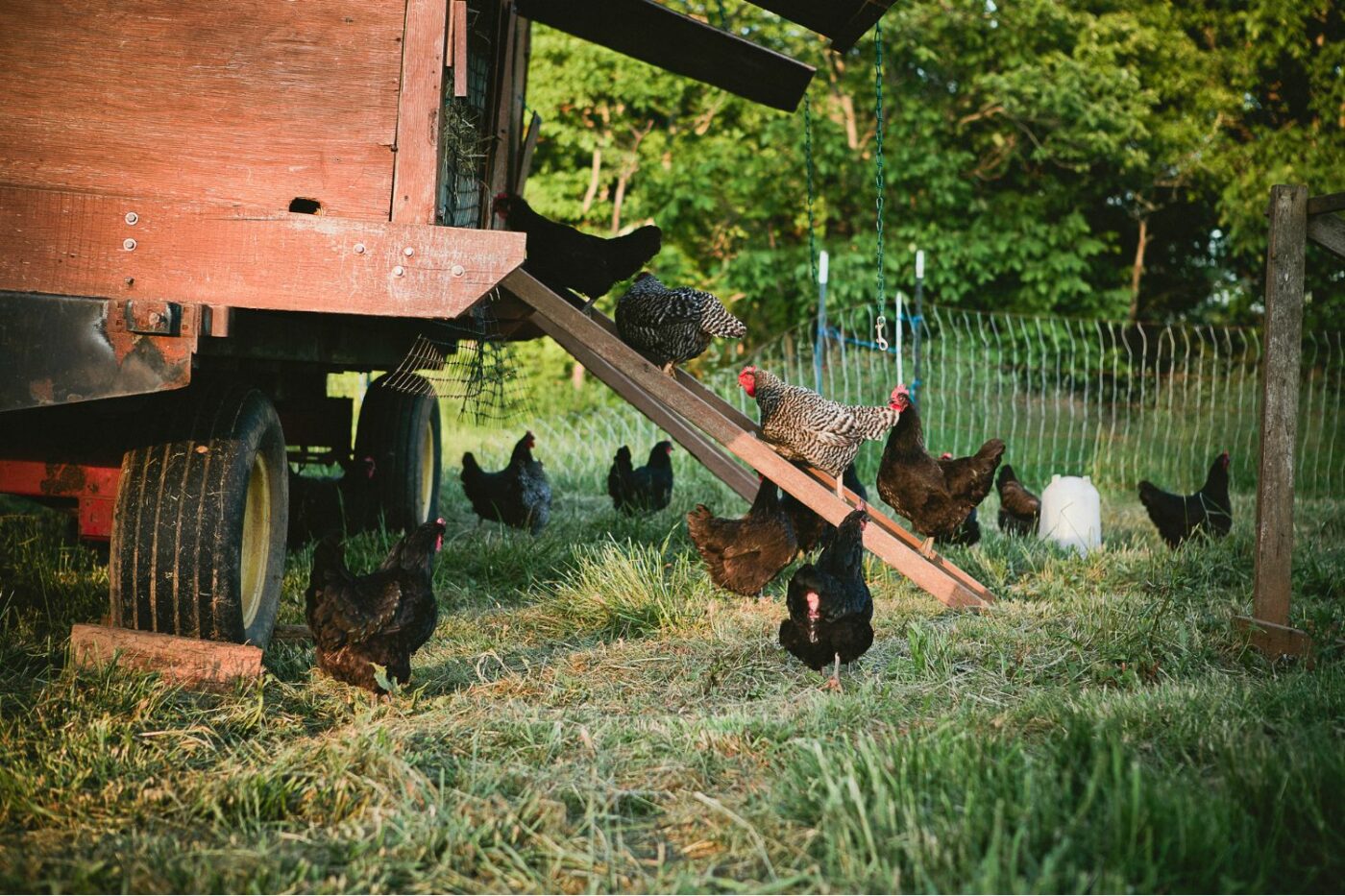Why Are Chicken Coops Often Built Off The Ground?
If you’ve seen photos of chicken coops or been around backyard chickens, you may have noticed that many chicken coops are elevated off the ground rather than sitting directly on the soil. There are several good reasons why elevating a chicken coop can be beneficial. In this article, we’ll explore the top reasons chicken coops are frequently built off the ground and the advantages this can provide.
Predator Protection
One of the biggest reasons coops are built off the ground is to protect the chickens from predators Ground predators like foxes, raccoons, weasels, and coyotes can’t access elevated coops as easily If a coop sits directly on the ground with gaps or weaknesses in the floor or walls, predators may be able to dig or chew their way in.
Elevating the coop makes it harder for larger predators to break in. Smaller burrowing predators like rats, mice, and snakes also will have a harder time accessing an elevated coop. These rodents won’t feel comfortable building nests in the open space under the coop.
Moisture Control
Keeping moisture under control is another key reason coops are often built off the ground. Excess moisture can lead to rot and mold which are unhealthy for chickens.
If a coop sits directly on wet ground or soil that doesn’t drain well, the constant moisture contact can cause wood floors to degrade faster. An elevated coop allows air circulation underneath which keeps the floor drier.
Areas prone to flooding are especially problematic for ground-level coops. A raised coop helps prevent flood waters from saturating the coop floor and walls. The increased airflow also helps keep ammonia levels lower in the coop by drying out the litter and droppings faster.
Easy Access
An elevated coop with the floor 2-4 feet off the ground is much easier to access and clean out. You don’t have to bend over or crouch down. Simply open the door and rake or shovel out the dirty litter into a wheelbarrow or bucket.
Collecting eggs from raised nest boxes is also easier without having to stoop down. The reduced physical strain is helpful for those who can’t bend easily like seniors or those with back problems.
Space Efficiency
Elevating the coop creates usable space underneath that essentially expands the outdoor run size. Chickens can safely occupy this covered space. It’s especially helpful in smaller yards where run space is limited.
You can even add amenities like dust bathing areas with sand under the coop. Hanging feed and water in this protected area frees up space inside the coop while keeping supplies shaded and dry.
Temperature Regulation
A coop raised off the cold ground benefits from increased airflow circulating underneath that better regulates interior temperatures. The air circulation provides cooling airflow in hot weather and helps insulate against cold from the ground in winter.
The space underneath also gives chickens a shady escape from the sun on overly hot days. Simply adding a tarp enclosure around 2-3 sides provides even greater protection from sun and wind.
Less Maintenance
A raised coop requires less frequent floor replacements from moisture damage. The added airflow also keeps the litter drier which means less frequent full coop cleanouts.
An elevated coop is also easier to clean out as mentioned earlier. The reduced time and physical strain of coop maintenance is a nice benefit.
Entry Access
Elevating the coop also prevents snow or rain from blocking the entryway. Chickens can come and go without trudging through deep snow or mud.
You’ll avoid having to continually shovel out the pathway to the coop door after each snowfall or heavy rain.
Level Site Not Needed
Finally, for the coop owner, an elevated coop avoids the need to level and prepare the ground surface. Leveling and grading a site for a ground-level coop takes work.
With a raised coop, you simply need relatively flat ground to place the support posts or feet. The natural terrain doesn’t have to be perfectly flattened and graded.
How High Off The Ground?
Typically, most elevated chicken coops are built between 1-4 feet high off the ground. Consider these factors when deciding on coop height:
-
1 foot is usually high enough to deter small rodents from nesting underneath
-
2-3 feet high allows easy access without excessive bending for cleaning/collecting eggs
-
Over 3 feet may be needed if designing a floor that drops open for cleaning
-
Make sure the entry height works for your chickens to access using ramps or stairs
The right height depends on your coop design, location, and predator threats. Start on the lower end around 1-2 feet and go higher if issues arise.
Building An Elevated Coop
If building your own elevated coop, the simplest design uses 4×4 posts buried 1-2 feet in the ground and anchored with concrete. Connect floor joists across the tops of the posts and enclose the walls and roof framing above that.
An alternate option is skids – long 4×4 runner boards that elevate the floor and serve as the base for attaching the walls. Skids make it easy to relocate the coop if needed.
Be sure to secure the flooring to seal up any gaps so rodents can’t squeeze underneath the coop from below. A chicken ramp or stairs give the flock access.
Add cross bracing between the corner posts, skids or floor joists to prevent racking and shifting of the coop over time.
Conclusion
Elevating a chicken coop off the ground requires a bit more initial effort and material cost. However, the long-term benefits of improved access, reduced maintenance, extra space, temperature control, predator protection and moisture resistance easily justify the extra upfront investment.
The ideal coop height balances the needs of the chickens and the caretaker. For most backyard flocks, sitting the coop floor 2-3 feet off the ground provides the best set of advantages. Give your flock added security and weather protection by joining the trend of building your next chicken coop up off the ground.

Materials for Chicken Coop Ramps

What should your chicken coop ramp be made out of? The majority of ramps are made of wooden boards or plywood. Wooden boards are the more durable and long-lasting option between these two options.
The rough texture of plywood creates an excellent grip for your chicken’s ramp. Plywood will tend to sag with passing time, so if you choose plywood, you should make sure to reinforce it with sturdier backing.
Whatever material you choose to make your chicken coop ramp with, you should make sure that it has a texture that won’t cause your chickens to slip and slide. The rungs that you attach will help greatly with this as well.
How to Maintain a Chicken Coop Ramp

The ramp of your chickens’ coop is going to be a frequently used part of the coop. This means that it is going to get a lot of wear and tear. You should carefully monitor the condition of the chicken coop ramp and make sure that it stays in good condition.
If the ramp gets damaged or worn down and slippery, it can cause your chickens to slip and injure themselves. You should make sure that your ramp is sturdy and safely attached to your coop to ensure your chickens won’t hurt themselves.
Your chicken coop ramp will also need routine cleaning. Chickens can be messy animals! Keep the ramp clean, and it will last longer. You should also make sure that you keep it sealed and painted as needed. This not only helps with the looks of your chicken coop, but it also keeps your coop in good condition longer.
The Chicken Coop Mistakes You DON’T Want to Make!
FAQ
Do chicken coops need to be raised off the ground?
Chicken coops are generally kept a foot or two off the ground by stilts. This offers protection from predators. If a coop is off the ground, it’s harder for snakes, foxes, and other predators to get into the coop.
How high off the ground should a chicken coop be?
A chicken coop should typically be raised at least 12 inches (1 foot) off the ground to help protect chickens from predators, improve ventilation, and keep the coop dry.
Why are chicken coops always elevated?
Elevate a chicken coop off the ground at least 1 foot for many reasons. An elevated coop ensures air can circulate around the coop, can prevent flooding in flood-prone areas, and prevents rats and mice from nesting.
Should I put anything under my chicken coop?
The run can be built up with gravel/small rock and then covered with layers of sand & bedding that will drain properly. Best covered by a roof. The coop needs a dry floor that doesn’t get wet. I use heavy wood shavings in my run and fine pine shavings in my coop.
Should a chicken coop be off the ground?
Because the floor of an elevated chicken coop stays much drier, your chicken coop floor will last longer. One of the biggest advantages to having a chicken coop off the ground is that the chickens can occupy the space underneath the coop, thereby extending the size of your run. Your chickens will thank you for this.
Why do people raise chicken coops?
The most common reasons why people raise their coops are: The main reason chicken coops should be raised is that it’s easier to keep predators out and your chickens safe. We all know that there are a load of animals out there that would just love to have a chicken dinner, including:
Do chicken coops have predators?
Predators like mice, rats, and snakes can easily find their way into a ground-level chicken coop to kill chickens or steal eggs, or even transmit diseases. With no floor or a weak floor, burrowing predators will always be a problem.
Why do coops need to be off the ground?
If you have frequent snows, that’s a lot of extra work. A coop off the ground has increased air circulation underneath it. Not only does this help to keep the floor dry, but it may also help to regulate the temperature within the coop. The increase of airflow in the summer may help to keep the coop floor cooler.
What is an elevated chicken coop?
An elevated chicken coop is a coop that is a couple feet off the ground. This design makes it easier to clean and provides more convenient access to nesting boxes and performing routine check ups on the flock.
Are raised chicken coops a good option?
These coops are a great option for older people or people with bad backs or knees. Some raised chicken coops even have removable floors. And some have floors with hinges that can swing open downward, dumping all the bedding out below. The nesting boxes in coops off the ground tend to be waist-high as well.
